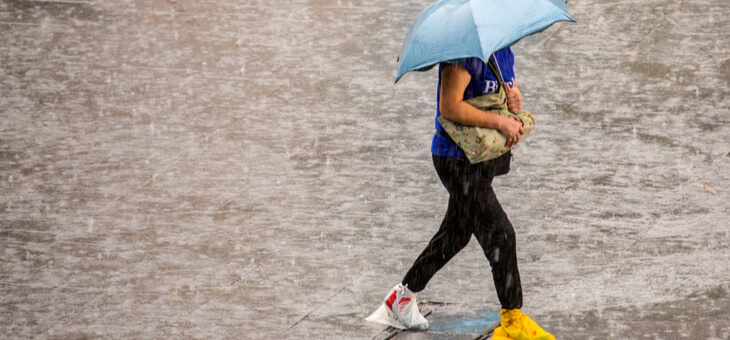We’ve certainly had our fair share of extreme weather here in Australia lately with the La Niña phase. During this weather pattern, there’s a cooling of the ocean surface in the central and eastern tropical Pacific. The normal easterly blowing winds along the equator are stronger than usual, pushing rainfall patterns into eastern and northern Australia.
Read: How rain, wind and heavy weather can affect your internet connection
So, before you grab your brolly (it’ll need to be super strong) or pile into the car, spare a thought for the travel disruption and potential danger these rains and winds might cause during a strong storm, and stay safe out there.
Do plan ahead
If you must travel during a storm or extreme weather event, keep checking the local weather forecast, fuel up the car, pack blankets, plenty of water and something to eat, just in case. Leave plenty of time for your journey with debris on the road and flood warnings and drive slower than usual.
Do dress for the weather
If you can’t resist visiting a coastal area or countryside for the invigorating fresh air, make sure you wear the right clothing. The forecast may look clear but if you get caught out, supportive walking boots and a windbreaker with a hood will be a godsend. Most importantly, a fully charged mobile (and a portable charger) is your most vital accessory.
Do look out for the kids, the dog and the elderly
Blustery weather can be especially dangerous for the vulnerable. Make sure everyone’s wrapped up warmly – if you feel chilly in the wind and rain, they’ll feel it even more. Waterproof layers will protect them from the elements and keep the dog on the lead. Severe weather can affect your dog’s behaviour, making them curious or overexcited – and you don’t want to put anyone at risk by having to chase after them!
Read: Flood clean-up could cause disease spike in coming years, experts warn
Don’t walk along cliffs and check the tide times
Tempting as it might be to watch those waves lashing against the rocks, stay clear of cliff edges, coastal paths and piers – and certainly don’t go it alone. Even if you think you’re strong, the wind is stronger, and if you’re on exposed high ground, a slip or trip could be fatal. If you have to cross the beach, check the tide times so you don’t risk getting cut off.
Don’t walk under scaffolding
Urban, built-up areas can be just as dangerous as remote paths. While scaffolders take the utmost care to secure their materials, there’s always the chance something might come unfastened in extreme weather conditions. Walk on the other side of the road and watch out for strong gales sending tree branches flying.
Read: Top tips to make camping more comfortable
Do give camping a miss
Check the forecast before heading off on a camping trip, if it looks like the area you’re going to will be affected, you may want to reschedule. If you are camping make sure you not to pitch up near any trees to avoid potential falling debris (or whole trunks). Low bushes might offer a safer windbreak. Big standing-height family tents will catch the wind easily, so go for a low to the ground robust one instead.
– With PA
If you enjoy our content, don’t keep it to yourself. Share our free eNews with your friends and encourage them to sign up.

